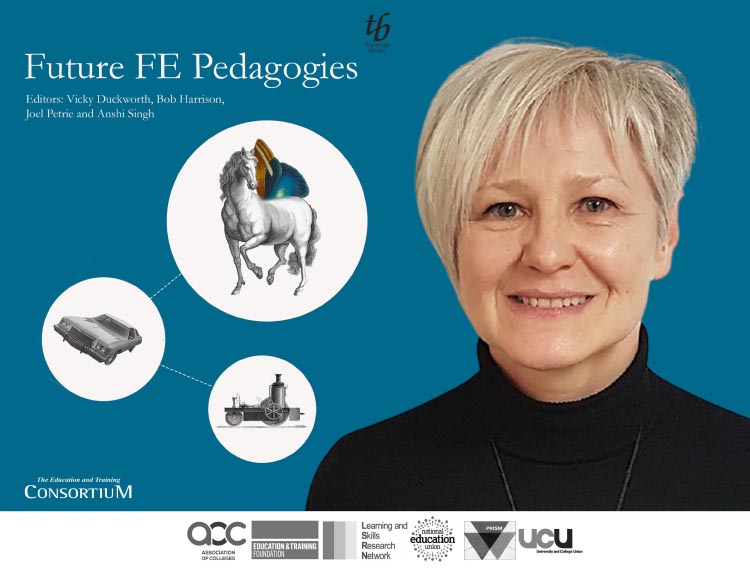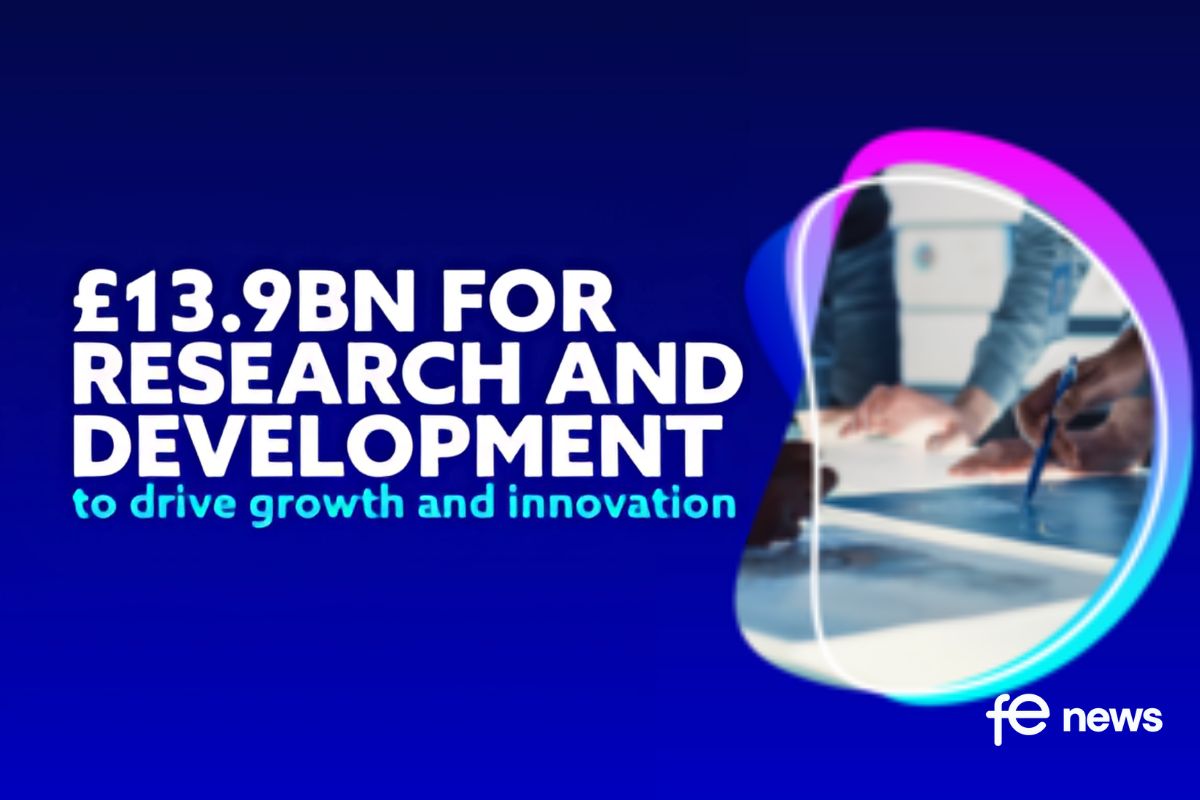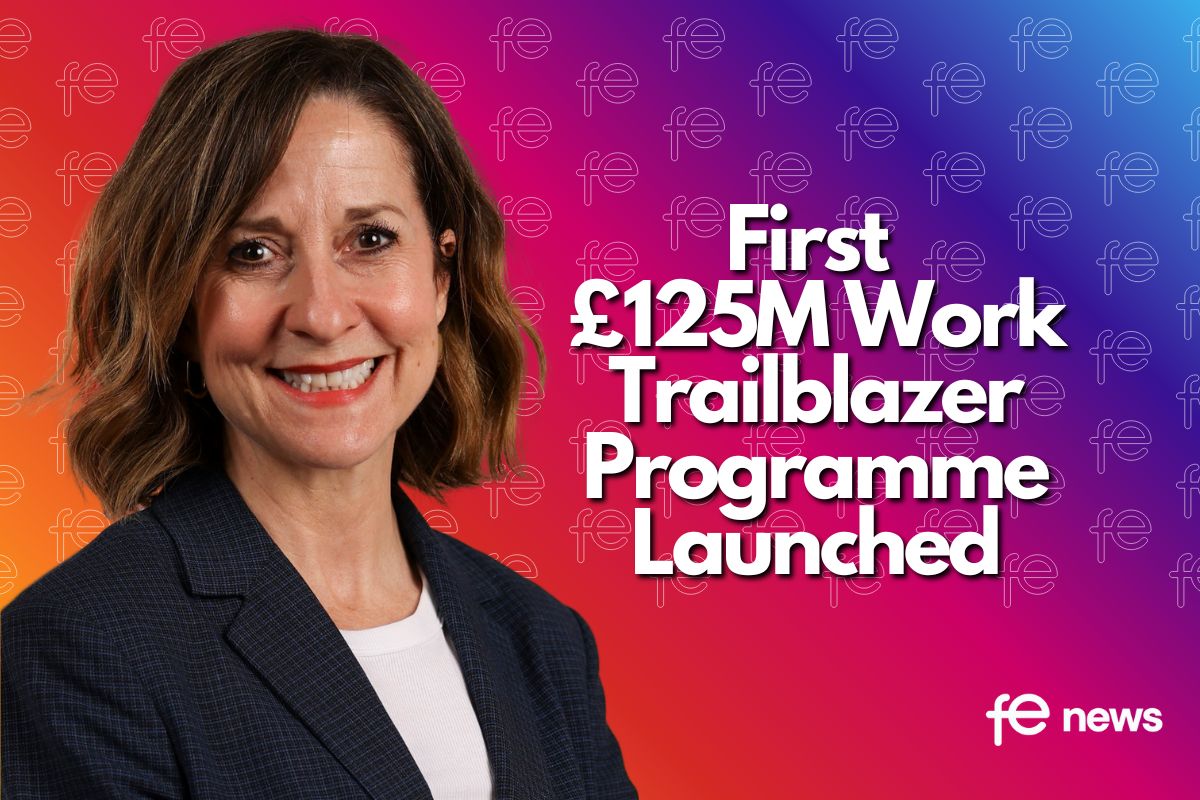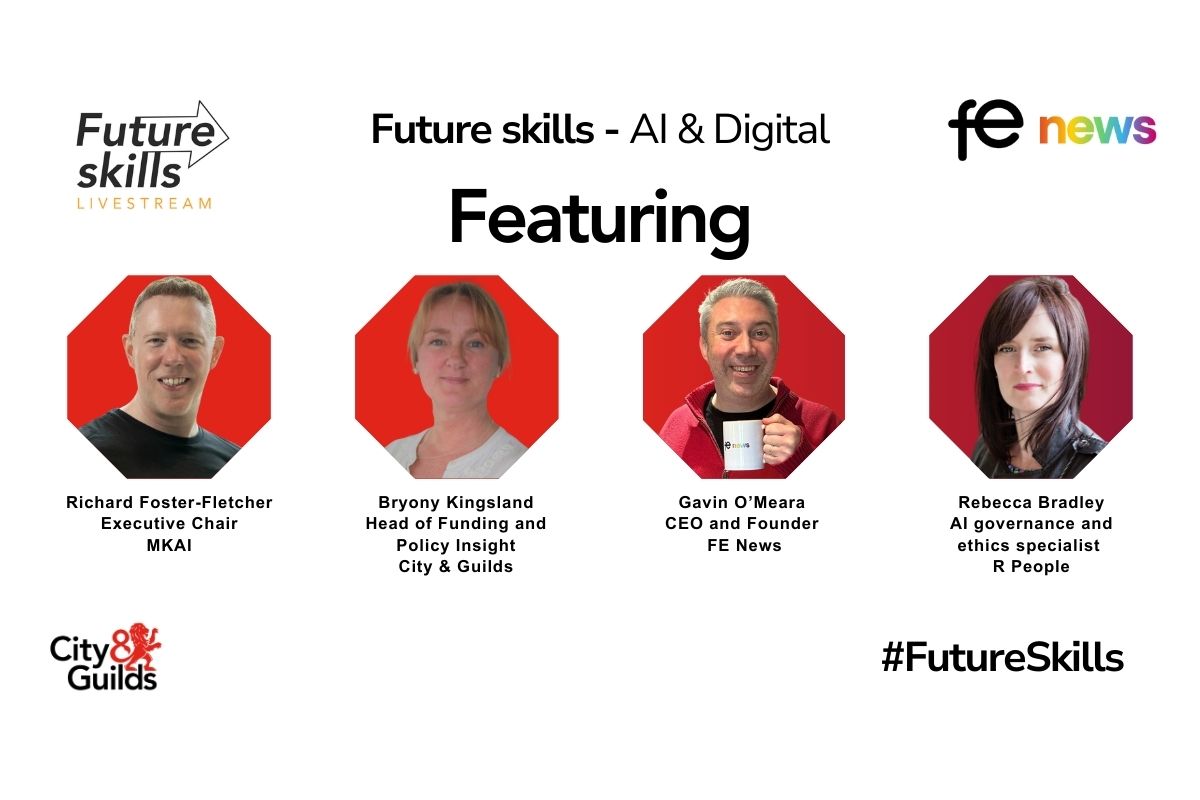Let’s not go back to ‘normal’, let’s connect – the future of FE pedagogy is blended!

I have very few photographs from my childhood. Although my parents owned a camera, they only took photos to record special occasions and a roll of film could last a year before being developed.
Teaching was delivered in a very didactical manner to the class, with little differentiation and interaction. Outside of the classroom, access to information was limited to physical publications and media such as radio, television, and cinema.
Advances in technologies have transformed the world we live in; moments are constantly being captured and instantly shared with anyone we choose, anywhere in the world.
We are connected.
We also have at our fingertips answers to questions no printed encyclopaedia would have been able to respond to with such breadth and immediacy. Information is overwhelmingly abundant and exponentially growing.
I recently played with “Reface”[1], an app that allows the user to swap faces digitally to “be” someone else, using photos or videos. Similar apps exist for voices so that false dialogue can be created. Fake “news” is becoming easy to produce and accessible to everyone. Recognising fake from true data is going to become increasingly challenging.
The recent Covid-19 crisis removed us from our comfortable learning context and forced us to explore new teaching and learning approaches facilitated by digital. 2020, while being challenging, was a learning and collaborative year. We all discovered new ways to interact virtually, whether with people or content. We learned by doing, trying things out. Some worked, some did not, but what mattered was that we kept an open mind, we tried new things, we learned from our mistakes[2] and shared what we did well. Our mindset shifted to that of explorers and collaborators.
With it came the realisation that “technologies provide powerful ways of supporting knowledge sequencing, layering and scaffolding including ‘spaced learning’”[3]. We discovered a new vocabulary for these new teaching approaches, such as “hybrid teaching” and “synchronous/asynchronous learning”. The more asynchronous learning can be “delivered with activities accompanied with clear instructions and structured in a logical manner”[4], “the more time is freed up for synchronous interventions to focus on developing higher level skills & mentoring individual understanding, performance and progress”.[5] Flipped learning makes the best of the digital world for knowledge acquisition and tutor-based classes for adding experience and application.[6] The approach gives learners the chance to choose the time, pace and place to interact with the activity content and collaborate with peers, while the wide range of digital accessible functionalities, such as close captions, immersive text, translator, etc., support their individual just in time needs.
There is no doubt that the Internet facilitates a “shift from thinking about teaching as providing information to thinking of learning and creating learning environments. This in turn creates a relationship shift between teachers and learners as the teacher, while remaining the subject expert, is no longer the sole information holder and promotes an evolution toward inquiry-based learning and toward the development of a learner-centred environment.”[7] “We see learning as a co-creation process between learner and teacher.”[8]
However, “the cultivation of learning is not only ‘a cognitive activity’” explains Illeris (2010) it is also “an emotional and social activity”[9] and while communication, collaboration and teamwork can be enhanced online; effective learning engagement requires teachers and their learners to build a sense of community. To be fair this is far more difficult to achieve remotely. MOOCs fail to retain 94% of the registered (non-paying) learners for this very reason[10]. The physical classroom and education provider settings remain critical in fostering the learners’ sense of belonging. Aristotle (350 B.C.E) would agree: “Man is by nature a social animal” and J. Dewey (1916) defines education as a “social process”[11].
“Educators, pedagogues and practitioners need to be gardeners rather than carpenters.” explains Alison Gopnik (2017)[12], our role is not only to make knowledge and skills stick but most importantly to nurture the development of independent thinkers and support them in making sense of the world. “With digital devices now constantly in our hands, our extended-self could become permanent”[13]
The 4th industrial revolution will displace skills. Machine learning or artificial intelligence (AI) is already pervading our daily lives and soon activities in every walk of life will be replaced by AI or by robots created for specialised tasks. Balfour Beatty (2017) is predicting human-free construction sites by 2050[14] while Daniel Susskind (2020) forecasts our inexorable evolution, to “A World Without Work”[15].
Change is our constant while upskilling and reskilling our journey ahead.[16] “The object and reward of learning is continued capacity for growth” J. Dewey (1916).
If this is the case, why would we return to redundant pedagogic approaches that are not harnessing the powers of the tools that are now at our disposal? Habit, comfort, modelling are our constant enemies. We tend to teach the way we were taught and the way we have taught in the past, assuming learners will be engaged in the way we once were. The old techniques may work for knowledge and skills to stick enough to pass an examination, but does it prepare our learners to live, work and study in a digital world?[17] “If nothing else technologies force us to re-evaluate the classroom as an environment and the relationships within it.”[18]
In a recent session, D. Russell (2021) asked ETF colleagues where teachers and trainers get their fundamental beliefs about education. While we discussed several sources, such as the intrinsic (values, motivations, etc…) and extrinsic (social, beliefs, etc…), we agreed that initial teacher training (ITE), CPD and peer support were the most valuable.
Are the systems in place to really support us in redefining our pedagogic approaches? D. Powell (2021) claims the CPD of FE teacher educators and mentors has been largely neglected because of lack of funding and adds that “FE ITE can only be as good as the teacher educators teaching it and the mentors supporting subject specialist pedagogy”. It is unclear whether most FE teachers’ core knowledge, understanding and skills in “digital” are up to date, but all of us should be proactive with our personal development. M. O’Leary (2020) proposes “a teacher-centred model of observation where the fundamental work takes place in the pre and post-session conversations that form the foundation of the ‘unseen observation’ cycle”, an approach that is owned by practitioners through critical reflection and peer support. After all, “the true roots of further education, lie with the intrinsic human desire for community and self-improvement.” B. Harrison (2021) It is time to build our professional learning networks (PLNs). I am looking forward to reading the findings from M. Gordon’s and J. Calvert’s OTLA research project (2021) as well as the reflections from fellow educators on EdTechSwap[19] and other FE communities.[20]
Teaching is becoming a process of learning. “Understanding the technology is important but realising the full educational potential of virtual learning is primarily a question of pedagogy. As we consider the future of learning, teaching needs to take centre stage.” E. Fairplay (2021)
For the FE sector to make the most of the many teaching and learning opportunities offered by the digital world, it is vital to put in place the investment and resources to sustain blended learning pedagogic approaches, so that every learner, teacher, and teacher trainer have the skills, tools, and connectivity they need to become 21st century lifelong learning digital citizens.
So, let’s not go back to ‘normal’, let’s connect – the future of FE pedagogy is blended!
Vikki Liogier, National Head of EdTech and Digital Skills, ETF
[1] App Store. 2021. Reface: face swap videos. [Accessed 6 April 2021].
[2] Compton, M., 2021. Free, easy and fit for purpose TEL; lessons learned the hard way by a non-IT whizz.
[3] Liogier, V., 2021. Does EdTech have a role in Ofsted’s new framework?
[4] Cheseldine, 2021. Moving a Course Online.
[5] Enhance Digital Teaching Platform. 2021. Asynchronous teaching and learning. [Accessed 6 April 2021].
[6] Enhance Digital Teaching Platform. 2021. The Flipped Classroom. [Accessed 6 April 2021].
[7] “I was thinking about the textbook – I guess in the beginning, I thought the textbook was all I needed to teach them. But, I’ve come to find out or realize that it’s not all that I need. And, I don’t want to shoot myself in the foot, but if the year was longer, I could do a lot more with them in terms of making them do research. Finding out information about different things. As opposed to just trying to give them this surface things that you get out of the textbook.” [online] Available at: Orrill, C., 2000. Building Learner-Centered Classrooms: A Professional Development Framework for Supporting Critical Thinking. [Accessed 6 April 2021].
[8] Ecclesfield, N. and Garnett, F., 2021. Learn Teach 21. [Accessed 6 April 2021].
[9] Illeris, K., 2010. Contemporary theories of learning. International Journal of Lifelong Education, pp.396-406.
[10] Insidehighered.com. 2021. Study offers data to show MOOCs didn’t achieve their goals | Inside Higher Ed. [Accessed 6 April 2021].
[11] Dewey, J., 1916. Democracy and Education. An introduction to the philosophy of education (1966 edn.). New York: Free Press.
[12] Gopnik, A., 2017. The Gardener and the Carpenter. St Martins Pr.
[13] Lawton, G., 2020. Your Extended Self. New Scientist, p.42.
[14] Balfour Beatty plc., 2021. Balfour Beatty predicts a human free construction site with the launch of its latest paper “Innovation 2050: A Digital Future for the Infrastructure industry”. [Accessed 6 April 2021].
[15] Susskind, D., 2021. A World Without Work. Penguin.co.uk. [Accessed 6 April 2021].
[16] Duckett, I., 2021, Ways of Engaging: some approaches to developing learning skills.
[17] Wheywood, J., 2021, The Reality of FE TEL Post-Covid-19: Thoughts from the bike by an FE Teacher Educator.
[18] Scott, H., 2021, The Proverbs of TEL.
[19] Enhance Digital Teaching Platform. 2021. Awarded Practice. [Accessed 6 April 2021].
[20] #joyFE #AmplifyFE #ukfechat #LoveFE
Future FE Pedagogies – Vol 1 |
||
|
The Future FE Pedagogies journal was categorically not intended to be a ‘how to improve your e-learning skills’ guide – there are professional associations, websites and online materials fulfilling this function already. Rather, we aimed to provide for time poor colleagues a series of think pieces: nuanced analyses of the potentialities and challenges of TEL for our practice. |
||
| @AoCDavidH | ||
| @BobHarrisonEdu | ||
| @DrMattOLeary | ||
|
Free, easy and fit for purpose TEL: lessons learned the hard way by a non IT whizz |
Martin Compton |
@Mart_Compton |
|
Matt Gordon & Jan Calvert |
@mattgordonwfc @jancalvert |
|
| @eddieplayfair | ||
|
Ways of Engaging: some approaches to developing learning skills |
@duckett_ian | |
|
Howard Scott |
@HowardScott75 | |
|
Digital Practitioners creating “artfully-crafted, student-centred, learning experiences” |
Nigel Ecclesfield & Fred Garnett |
@Neecullompton |
|
Dave Cheseldine |
||
|
The Reality of FE TEL Post-Covid-19: Thoughts from the bike by an FE Teacher Educator |
Jamie Heywood |
@JamiewHeywood |
|
David Powell |
@DavidPowellHud | |
|
Conclusion |
Vikki Liogier |
@VikkiLiogier |











Responses